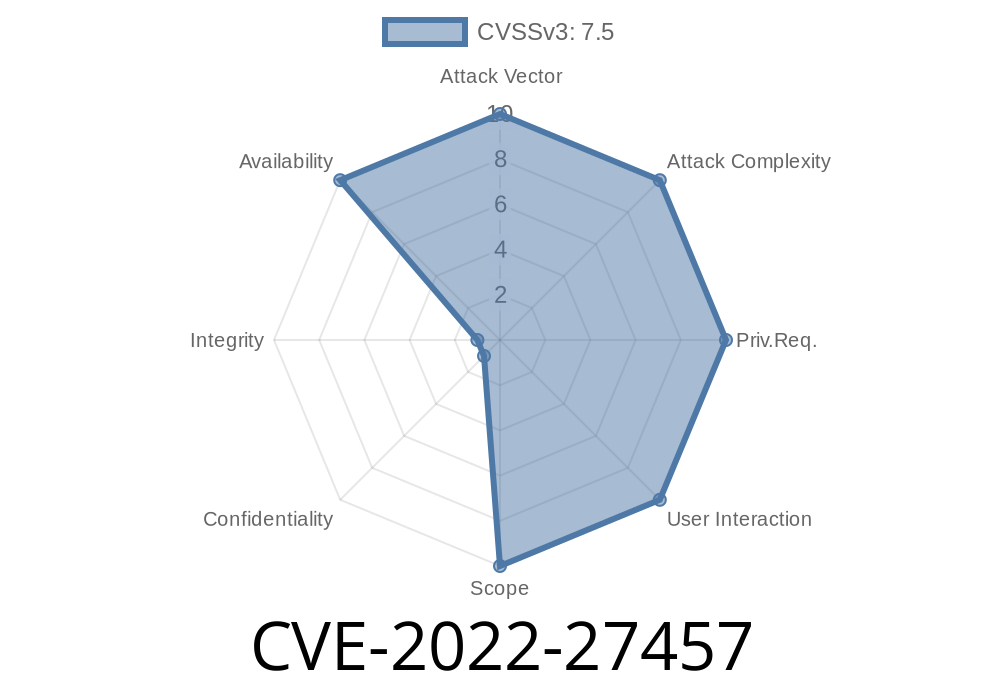MariaDB, a popular choice among developers for its open-source database management system, has been discovered to contain a critical security vulnerability in version 10.6.3 and below. This post will delve into the details of this vulnerability (CVE-2022-27457), discussing the root cause, proof-of-concept exploit code snippets, and potential impact on affected systems. Furthermore, readers will find links to original references, helping them understand the nature of this vulnerability and mitigate its consequences.
Background on CVE-2022-27457
The vulnerability, assigned the identifier CVE-2022-27457 by the Common Vulnerabilities and Exposures project, is a use-after-free vulnerability present in the my_mb_wc_latin1 component at the /strings/ctype-latin1.c file of the MariaDB Server v10.6.3 and below. Use-after-free vulnerabilities occur when a program continues to use memory after it has been freed, potentially leading to code execution, denial of service, or information leaks.
Original References
1. MariaDB Documentation
2. CVE-2022-27457 Advisory
Code Snippet Illustrating the Vulnerability
The code snippet below highlights the problematic lines in the ctype-latin1.c file, where the use-after-free vulnerability exists:
int my_mb_wc_latin1(const CHARSET_INFO *cs, my_wc_t *wc,
const uchar *s, const uchar *e)
{
if (s >= e) // Sanitizing input
return MY_CS_TOOSMALL;
*wc = (my_wc_t) *s; // Use-after-free vulnerability occurs during this dereference
return 1;
}
As seen in the code snippet above, the pointer s is dereferenced to assign memory to *wc. However, it is not checked whether s points to a valid memory region or if it has been freed, leading to the use-after-free vulnerability.
Proof-of-Concept Exploit
An attacker could exploit this vulnerability by crafting a malicious SQL query that triggers a use-after-free condition, potentially leading to arbitrary code execution. A simple proof-of-concept to reproduce this vulnerability is shown below:
SELECT * FROM vulnerable_table WHERE charset='latin1' AND malicious_input='\xDD\xA4\xEE\xBE';
Upon executing this carefully crafted query on an affected system, the MariaDB server would crash due to the use-after-free condition.
Possible Impact
The consequences of this vulnerability could be severe. If an attacker manages to successfully exploit this vulnerability, they may gain control over the affected system, potentially leading to unauthorized access, exfiltration of sensitive information, denial of service, or further spreading of the attack to linked systems.
Mitigation Suggestions
To protect against this vulnerability, those running MariaDB Server v10.6.3 or older versions are advised to promptly apply patches or upgrade to the latest version of MariaDB. Additionally, organizations should ensure that strong access controls are in place to restrict unauthorized access to the MariaDB server. Continuous monitoring and network segmentation can limit the attack surface and prevent the spread of attacks in the event of a successful breach.
Conclusion
The CVE-2022-27457 vulnerability is a critical security flaw in MariaDB Server v10.6.3 and below, impacting the my_mb_wc_latin1 component. By understanding the root cause, exploit details, and potential impact of the vulnerability, organizations can take the necessary steps to mitigate the risks associated with this vulnerability and enhance their overall security posture.
Timeline
Published on: 04/14/2022 13:15:00 UTC
Last modified on: 06/30/2022 12:56:00 UTC
